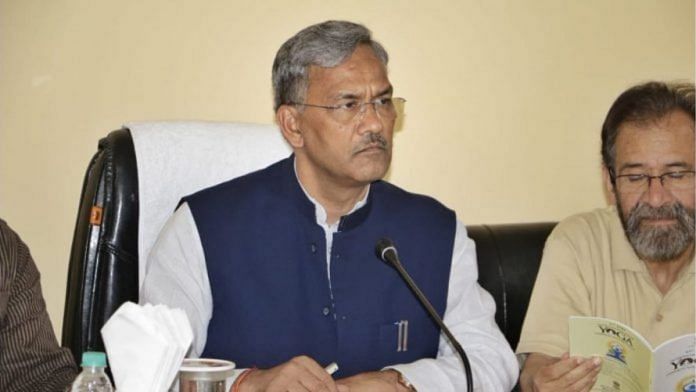New Delhi: The resignation of Trivendra Singh Rawat as the Uttarakhand chief minister displays a phenomenon. BJP, a supposedly stable and powerful party with a strong high command, has never been able to give a solid government to a small state like Uttarakhand despite popular support.
It’s been 20 years since the state was carved out of Uttar Pradesh, and in that time there has been only one chief minister, out of the eight in the history of the state, who have completed a five-year term and that was N.D. Tiwari of the Congress party.
In episode 699 of ‘Cut the Clutter‘, ThePrint’s Editor-in-Chief Shekhar Gupta traces the political instability in this small state, explains why the BJP has never been able to establish a stable government there, and what prospects await defectors in the ruling party.
Even before the first regular election could take place, BJP had already run through two chief ministers. It had Nityanand Swami from 10 November 2001 to 29 October 2002, 10 days less than a year. Then Bhagat Singh Koshyari came in for five months, after which the state’s first-ever election took place in 2002 — two years after it was formed. Congress won the election and Tiwari became the chief minister.
After him, in the 2007 election, BJP won and B.C. Khanduri took over.
“There was quite a bit of optimism about him but he didn’t last. In just over two years, he was gone,” Gupta said.
Ramesh Nishank Pokhriyal took over in June 2009 but was gone by September 2011. Khanduri came back but lasted only till March 2012 because that is when fresh elections were held.
“BJP obviously got desperate that the state did not seem to be in good hands on the eve of the elections, and they had to bring in a more competent chief minister or a more effective chief minister to be able to win the elections. That’s how they brought in Khanduri. But BJP did not win the election,” Gupta noted.
Also read: How Chinese cyber-attacks, Mumbai blackout depict a new era of low-cost high-tech warfare
‘Handpicked by Amit Shah’
In 2012, Congress won the elections and Vijay Bahuguna became the chief minister, but he lasted only two years, after which he defected to the BJP. Then came Congress’s Harish Rawat and he lasted two years, following which there was a short spell of President’s Rule in the state.
Upon a court ruling for a test of strength, Harish’s government was reinstated but it didn’t last more than 10 months. Fresh elections took place in 2017 where the BJP won a majority and Trivendra Singh Rawat became the chief minister.
“He was handpicked by Amit Shah, so that he could then use him to cut through all the local factionalism and politics within his own party where nobody can stand anybody else. While he lasted for four years, he’s been having problems,” Gupta said.
In 2019, the RSS had made a representation against Trivendra Singh Rawat to the BJP high command, saying he didn’t listen to anybody, that he was aloof. There were also some insinuations of corruption.
In 2020, the VHP complained that he had allowed a private distillery to be set up in Devprayag. In 2016, a local journalist, Ramesh Kumar Sharma, alleged that when Trivendra Singh was in charge of Jharkhand for the BJP, he appointed somebody, who made payments to his relatives, as chairman of the Gau Seva Aayog.
Last year, journalist Sharma was arrested. But soon after, the state high court intervened and a CBI enquiry was ordered against Trivendra Singh, which was then stayed by the Supreme Court. But all this did no good to his image.
“The BJP has some insecurities in Uttarakhand because elections are coming up and they don’t want to lose. Second, it’s also that a lot of the Congress imports in the BJP may get impatient before the elections. So they also have to be assuaged, because these are small states with small cabinets,” Gupta added.
The Aam Aadmi Party is also making quite an energetic entry in the state.
Jharkhand saw a similar fate — a succession of BJP chief ministers — but it is now governed by a Congress-GMM coalition. Similarly, the only reason B.S. Yediyurappa is surviving in Karnataka is because the BJP does not have the strength to get rid of him.
“Under Modi and Shah, you would have thought that this trend will change but Uttarakhand’s example tells us it’s not changing. And the second thing it tells us is that when defectors go to the BJP, they have to wait a very long time to get what they thought they would have got by defecting,” Gupta added.
Watch the full episode of CTC here:
Also read: Why Haryana’s new law reserving 75% private jobs for domiciles is self destructive politics



